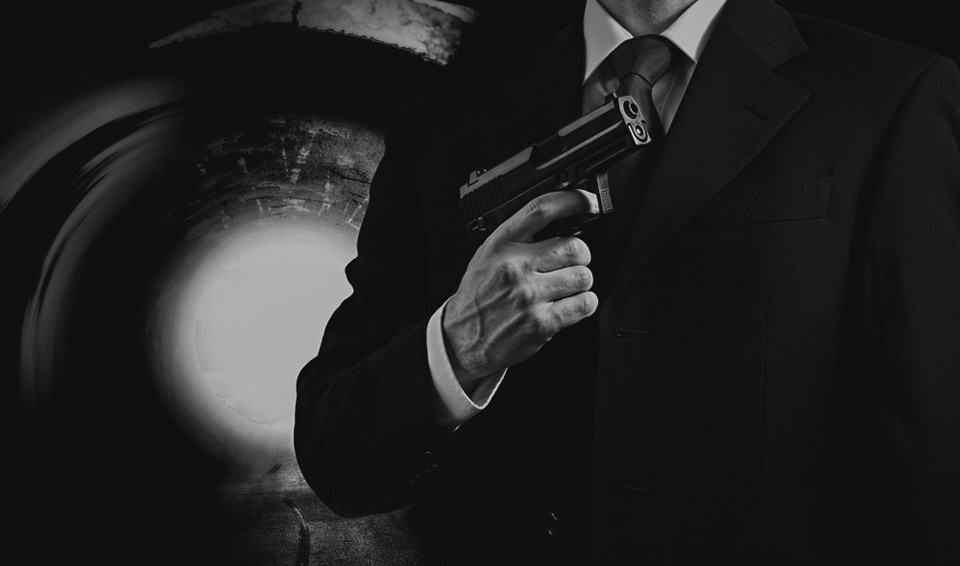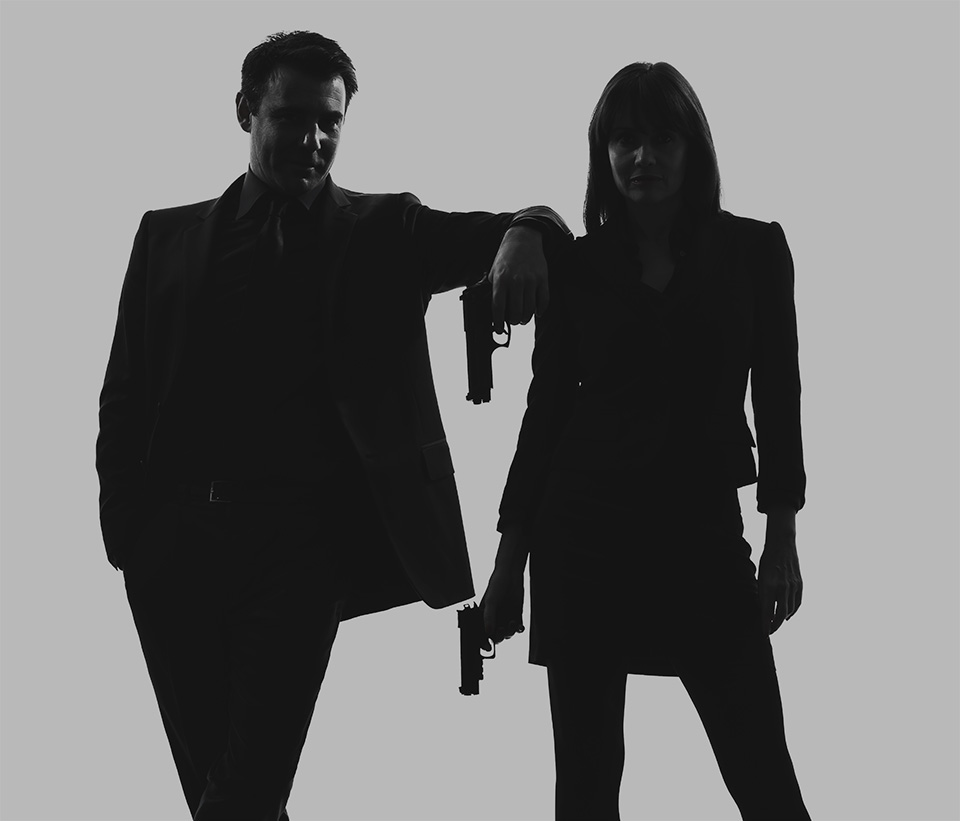
The most compelling storyline of the modern melodrama is not always about the struggle between hero and villain, but the challenge between the hero and his own humanity. Gone is the squeaky-clean superhero of Christopher Reeves’ Superman, long-replaced by the brooding Batman, the brash Bond and the devious Dexter Morgan. It is the human frailty that makes the hero’s accomplishments so remarkable, as we relate to the moral ambiguities they must wrestle with to save the day. In a sense, it’s good to be bad, and we love our fictional heroes not just for their resolution of conflict, but the lines they cross along the way.
This post is brought to you by the Jaguar F-TYPE Coupe. Visit BritishVillains.com to find out why it’s #GoodToBeBad.
The Origin of the Modern Anti-Hero
The modern anti-hero owes much of his identity to British spy-turned-author Ian Fleming. Fleming famously wrote a series of novels about James Bond, a secret agent unbound by law in his fight to protect both queen and country. Bond’s aims were always true, as he fought against those who would harm the innocent for personal gain, power or vengeance. Yet James Bond is not revered for his successes, but his style. Bond drove the finest automobiles, wore custom-tailored suits, sported a Walther PPK in one hand and a supermodel in the other, finishing it off with a shaken martini at the end of the night. Most every man in America has dreamed about that lifestyle, and James Bond has been its quintessential representative since the 1950s.
He was probably also a sociopath. A different perspective of James Bond might see an alcoholic womanizer who killed without emotion and shattered every rule handed down to him. Some counts have James Bond sleeping with 52 women over 23 films. A study from Nottingham University Hospital in England claims that Bond consumed 45 alcoholic beverages a week, far more than is necessary to raise red flags from the National Institute of Alcohol Abuse and Alcoholism. Finally, Bond has killed a total of 352 people in 23 films (while dodging 4,662 bullets), a number which might explain the drive to drink and the need for a warm pair of arms (or 52).
Despite these potentially-crippling emotional flaws, James Bond perseveres. And throughout the years, the wear and tear on Bond’s emotions has become a central feature of the story. In the Sean Connery years, James Bond himself was neither shaken nor stirred by the trauma, the drink or the lack of meaningful relationships. The most recent Bond, portrayed by Daniel Craig, was humanized to the point of love, grief and even tears. It was the first time in Bond’s history that he felt almost fragile to a point. A precise instrument of espionage from one perspective, an emotional being from the other. This represents the full spectrum for the anti-hero: a man who is unbound by law and by morals, but ultimately faces the toughest villain of them all– himself.
View in gallery
The Fall of the Hero, The Rise of the Villain
As the modern hero falls from grace, to a place where his sins are central to his appeal, the villain is slowly becoming a source of morality. In the latest Batman film The Dark Knight Rises, the villain Bane was motivated by political corruption, income inequality and some cruel and unusual punishment in the prison system. In Star Trek Into Darkness, the villain Khan fought against a corrupt Star Fleet admiral who had taken 72 of his crew hostage to force the villain to aid Star Fleet’s war technology efforts. In the X-Men series, the villain Magneto fights for the rights of his own race of mutated humans who are persecuted by civilians and governments alike. Each of these villains see themselves as freedom fighters, while our heroes challenge them to their ends.
It’s a case of history being written by the victors. While these villains are heroes in their own minds, the anti-hero’s methods are downright villainous.
The Batman franchise tells the story of a dark, secretive vigilante who operates outside the law (and at times, is portrayed as a villain himself). Star Trek’s Captain Kirk is a loose cannon without regard for authority or the rule of law in his society. James Bond represents a bit of both, a lawless killer with a lust for the consumption of liquor and ladies alike. By our society’s standards, these are deeply flawed men, and their villainous counterparts each seem to be fighting for a higher cause.
Why Do We Love the Anti-Hero?
What drives our obsession with heroes that make it good to be bad? There’s the human element, where we see our heroes overcome flaws we see in ourselves. There’s the drive in each of us to do great things, and to believe that if the circumstances were right, we could follow in their footsteps. Finally, there’s the lifestyle– the exotic cars and supermodels of James Bond, the gadgets and the lair of Batman, the command of a the star ship of Captain Kirk. We love the anti-hero for the desire in ourselves to live free of our moral and emotional constraints, to fight for a cause we believe in and to do it in ultimate style. Since our earliest days, most of us have fantasized about getting the bad guy, driving the fastest car, firing the biggest gun and saving the damsel in distress. It’s a part of our identity in American culture and beyond, and we owe it to the anti-heroes of modern fiction.
The Human Element
We’ve all suffered in our lives– we’ve struggled with loss, sickness, regret and countless other hardships. These individual emotional battles can be entirely crippling at times. The modern anti-hero has faced these struggles, from Dexter Morgan’s dark passenger to Bruce Wayne’s orphaned upbringing, and they’ve found a way to turn these struggles into a drive for good. We can relate to their struggles and hope for the same successes in our own lives. This relation is part of what drives our obsession with the anti-hero. They’re flawed, just like us, and their successes lead by example.
Freedom from Ethical Boundaries
Without his license to kill, James Bond would be lost. There are ethical boundaries in life that prevent normal men and women from becoming heroes. We look up to those who have taken risks and dared to shake things up despite the consequences. While we shouldn’t endeavor to hurt others, there are ethical lines that should at times be challenged for the greater good. The most recent example outside of this fictional environment is the work of Edward Snowden, who crossed ethical lines to expose a massive surveillance net following our every digital step. No matter what side of that controversy you adhere to, you have to admit– it sounds like the stuff of great anti-hero fiction.
The Drive to Do Great
Beyond our individual struggles, we also feel the pain of others. We see injustices in our lives and those around us, and we each have a drive to do something about it within us. However, we rarely even speak up, let alone act. Our heroes and anti-heroes (and some aforementioned villains) rise to the occasion to act for those who cannot act on their own. These are underdog stories, American stories, and they inspire us to follow in their footsteps in a drive to do great.
The Lifestyle
Nearly every American man has once fantasized about being James Bond. If it’s not the supermodel at their side, it’s the supercar underfoot. If it’s not the endless class and well-timed quip, it’s the impeccable style and unshakeable confidence. Even despite his faults, which most overlook, he represents a lot of what men strive to become. The iconography of James Bond is aspirational in its very spirit, and his fictional life is more than just a story to many, it’s an unwritten code.
View in gallery
– – – – – – – – – –
From Guy Fawkes to James Bond, Bruce Wayne to Dexter Morgan, the allure of the anti-hero is a strong force in American culture. It represents the worst in us and the best in us at once, a drive to do great despite the deep-seated flaws that serve to derail us. It’s not just the freedom from the law and the achievement over their own humanity that make them appealing, it’s also the lifestyle these anti-heroes lead. The squeaky-clean image of the traditional superhero just doesn’t cut it anymore. In the United States and throughout the west, it is the flaws, the humanity and the dare to do great which attracts us so strongly. We love and admire them, and we see so much of them in ourselves.
By Mike Payne for TheCoolist.com
This post is brought to you by the Jaguar F-TYPE Coupe. Visit BritishVillains.com to find out why it’s #GoodToBeBad.






This is a great treatise…